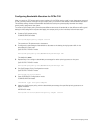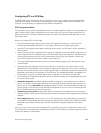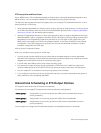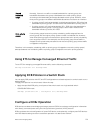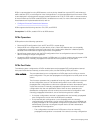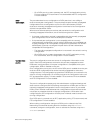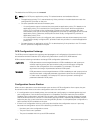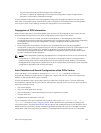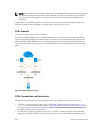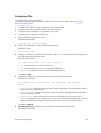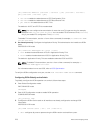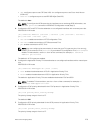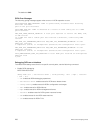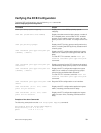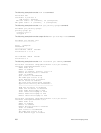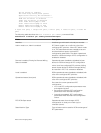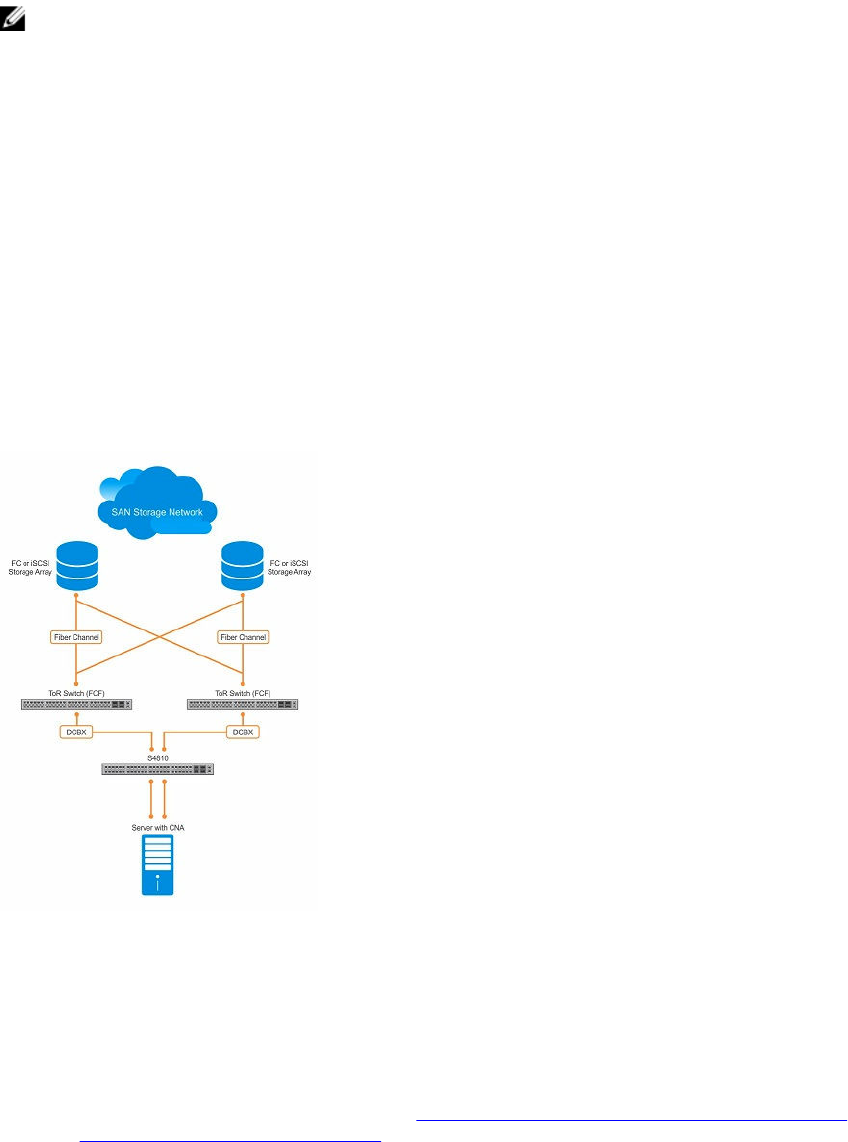
NOTE: Because DCBx TLV processing is best effort, it is possible that CIN frames may be processed
when DCBx is configured to operate in CEE mode and vice versa. In this case, the unrecognized
TLVs cause the unrecognized TLV counter to increment, but the frame is processed and is not
discarded.
Legacy DCBx (CIN and CEE) supports the DCBx control state machine that is defined to maintain the
sequence number and acknowledge the number sent in the DCBx control TLVs.
DCBx Example
The following figure shows how to use DCBx.
The external 40GbE 40GbE ports on the base module (ports 33 and 37) of two switches are used for
uplinks configured as DCBx auto-upstream ports. The device is connected to third-party, top-of-rack
(ToR) switches through 40GbE uplinks. The ToR switches are part of a Fibre Channel storage network.
The internal ports (ports 1-32) connected to the 10GbE backplane are configured as auto-downstream
ports.
Figure 29. DCBx Sample Topology
DCBx Prerequisites and Restrictions
The following prerequisites and restrictions apply when you configure DCBx operation on a port:
• For DCBx, on a port interface, enable LLDP in both Send (TX) and Receive (RX) mode (the protocol
lldp mode command; refer to the example in CONFIGURATION versus INTERFACE Configurations
in the Link Layer Discovery Protocol (LLDP) chapter). If multiple DCBx peer ports are detected on a
local DCBx interface, LLDP is shut down.
• The CIN version of DCBx supports only PFC, ETS, and FCOE; it does not support iSCSI, backward
congestion management (BCN), logical link down (LLDF), and network interface virtualization (NIV).
276
Data Center Bridging (DCB)



